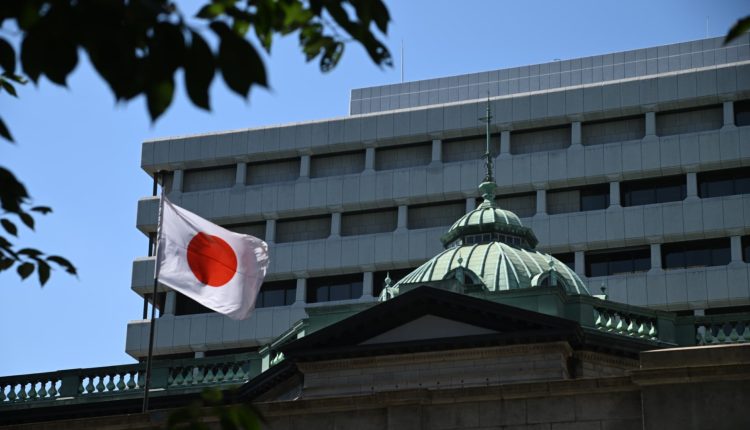The Bank of Japan headquarters in Tokyo.
Bloomberg | Getty Images
Japan’s central bank is allowing more flexibility in its yield curve control policy, shifting the language used to describe the upper bound of the 10-year Japanese government bond yield.
In its release, the Bank of Japan said the target level of the 10-year JGB yield will be held at 0%, but will take the upper bound of 1% “as a reference.”
In July, the BOJ effectively widened its yield target band on the 10-year JGB by 50 basis points to 1% on either side. However, the bank indicated it will commit to allowing yields to fluctuate in the range of around plus and minus 0.5 percentage points from its 0% target level that was instituted last December.
The bank’s board approved the move with a 8-1 vote, with only BOJ board member Toyoaki Nakamura dissenting. The release explained that while Nakamura was in favor of increasing the flexibility of YCC, he was of the view that it was more desirable to enact this only after confirming a rise in firms earning power from Japan’s finance ministry’s survey.
Furthermore, the BOJ also increased the country’s inflation outlook compared to its July report. It noted that this is mainly due to the prolonged effects of pass-through cost increases, led by the past rise in import prices and the recent rise in crude oil prices.
The core CPI forecast was lifted to 2.8% from 2.5% for its fiscal 2023, while it was also raised to 2.8% and 1.7% respectively for fiscal 2024 and 2025.
The previous forecast was 1.9% for 2024 and 1.6% for 2025. Japan’s fiscal year runs from April to March.
The BOJ said there are “extremely high uncertainties” surrounding economies and financial markets at home and abroad, concluding therefore it is “appropriate” to increase the flexibility in the YCC policy.
It also explained that its previous stance, where it strictly capped long-term interest rates at 1%, “will have strong positive effects, but could also entail large side effects. Given this, it decided to conduct yield curve control mainly through large-scale JGB purchases and nimble market operations.”
Graphic released by the Bank of Japan explaining its current stance on YCC, as well as its revised inflation forecasts.
Bank of Japan
Separately, the bank continued to hold its short term policy rate at -0.1%, even as core inflation in the country exceeded the stated 2% target for 18 consecutive months. The BOJ’s definition for core inflation excludes food prices.
Core CPI slowed to 2.8% in September from 3.1% in August, dipping below the 3% threshold for the first time in over a year.
Read the full article here

